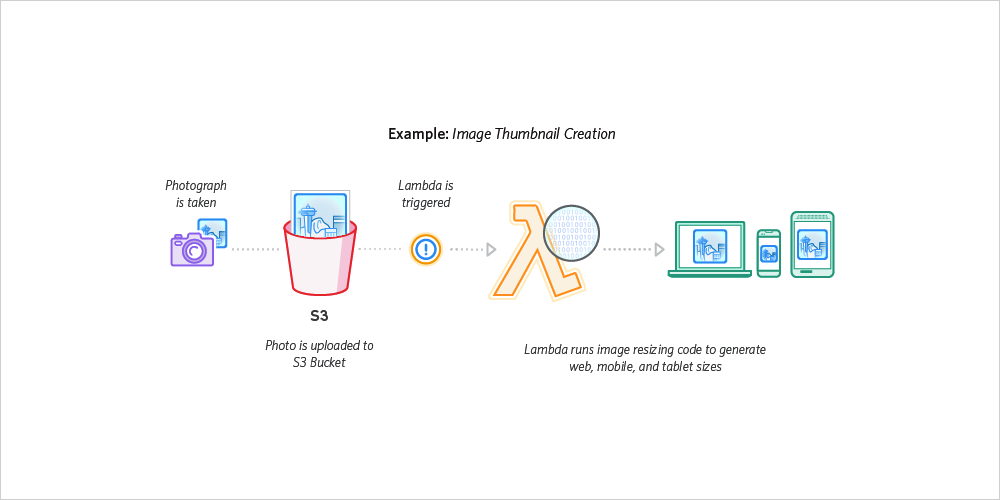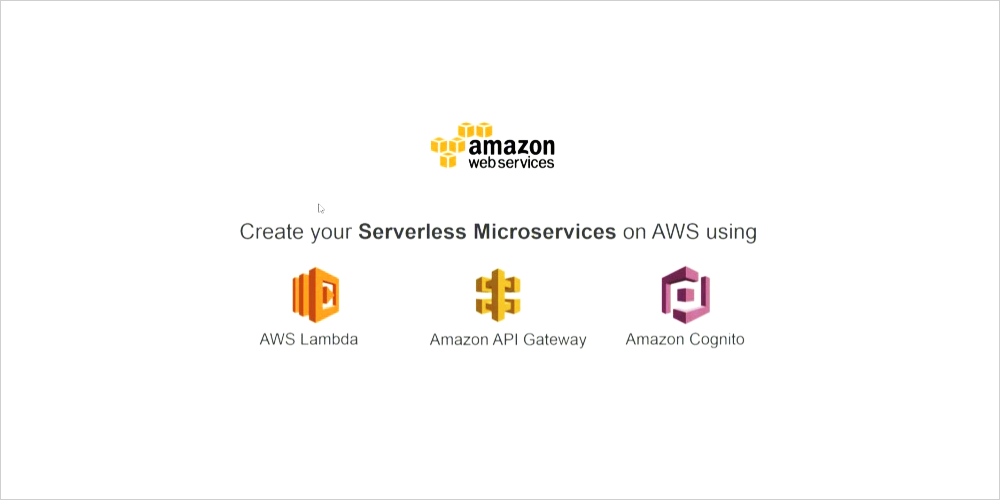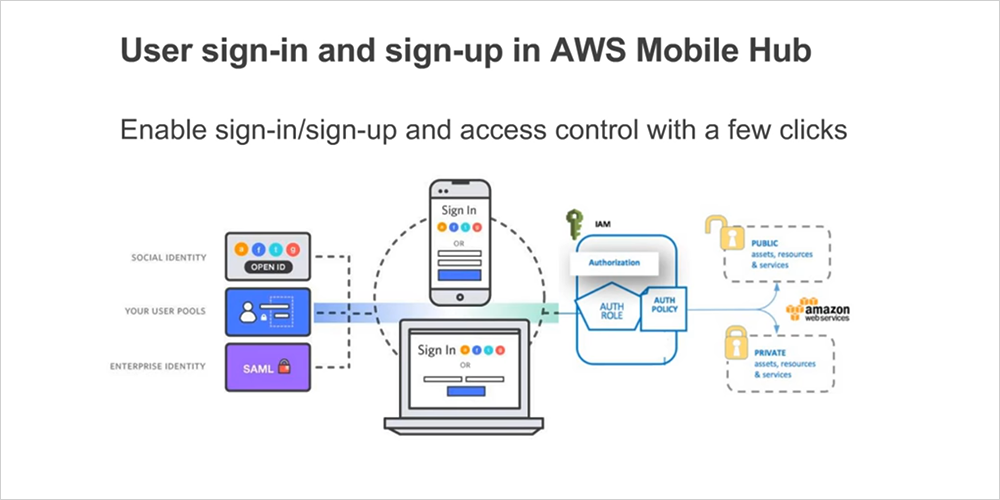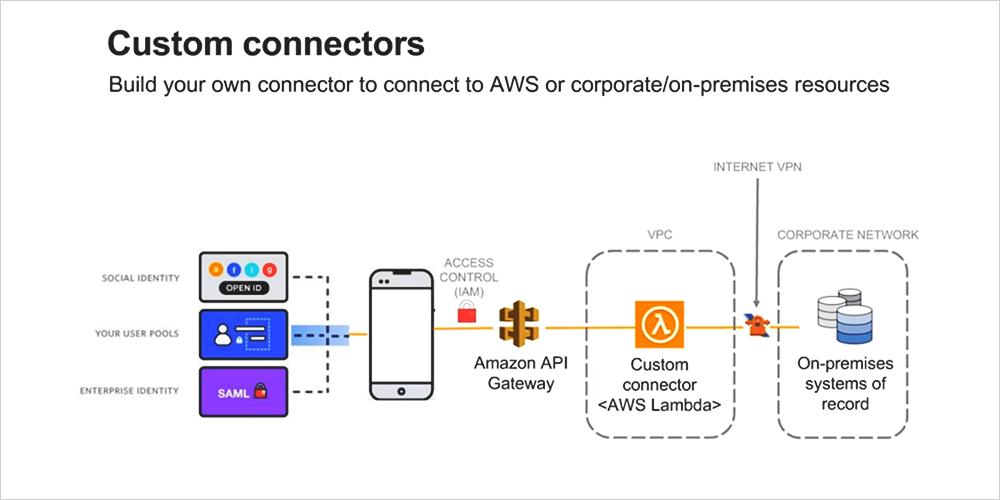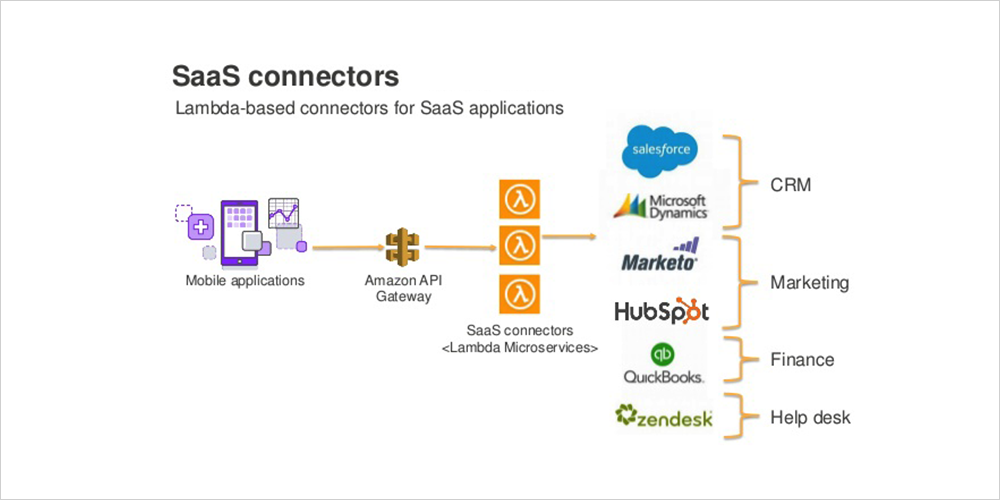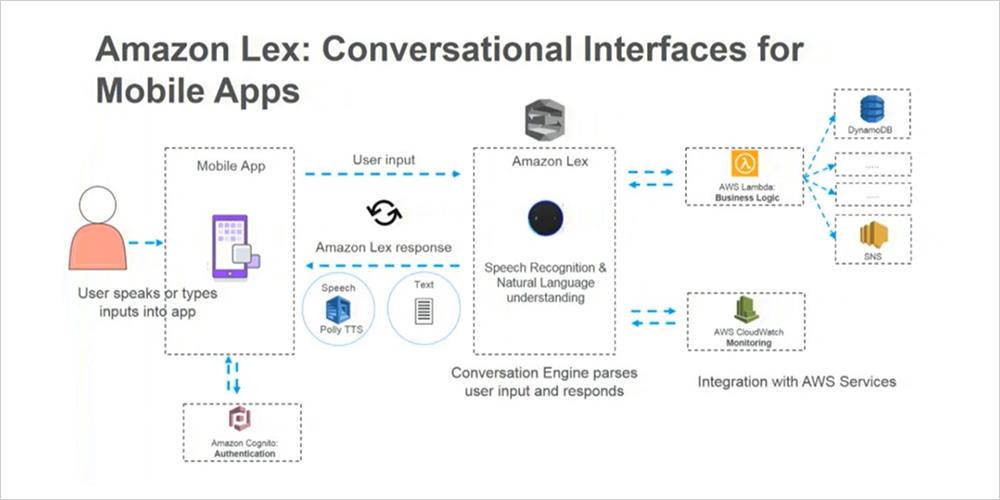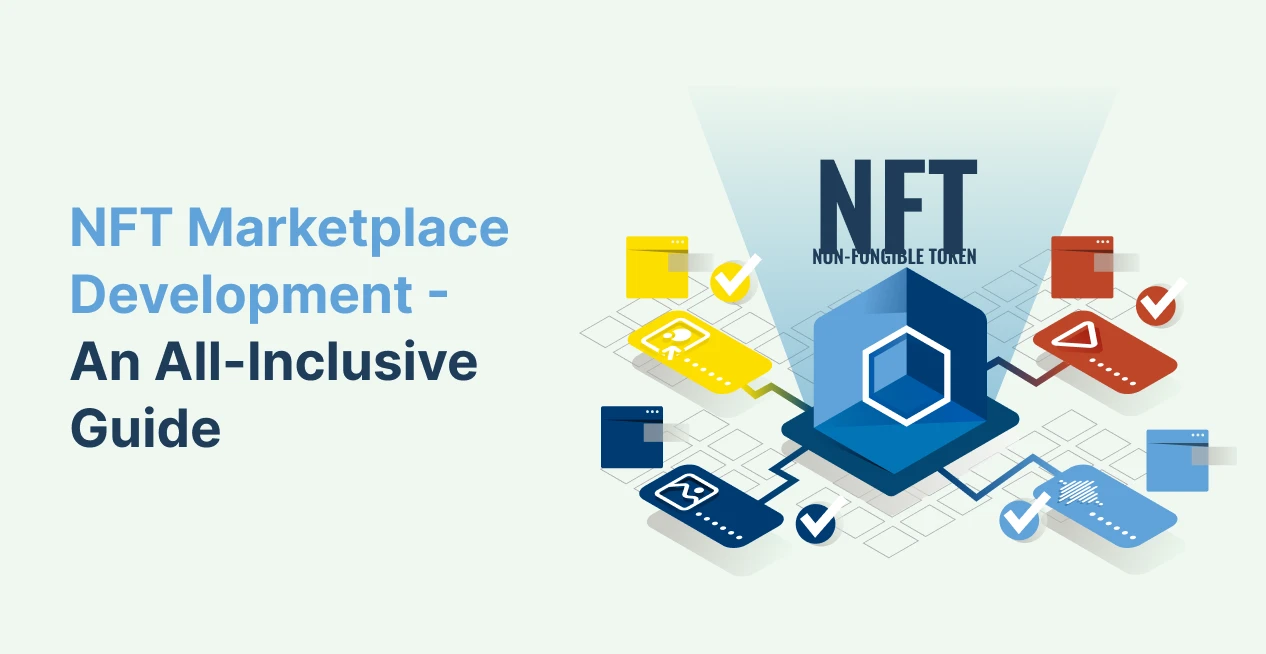With the introduction to Cloud Computing, there has been radical changes noticed in the development and deployment methodology. We came across to the term virtual servers which increased the productivity of developers by streamlining the development process.
Earlier, a developer was responsible for managing various operational tasks like security and storage maintenance, content delivery, etc besides developing. This consumed a lot of time and energy. Now, the developers without any worry can focus only on their core work, i.e developing, rest of the tasks are carried by cloud servers.
There are a number of cloud-based platforms which provide wide-range of services to users. Amongst these is Amazon Web Services (AWS) which is proven to be the best. We will be learning the use of AWS in mobile application through this blog.
A Quick Highlight
- Microservices and Serverless Architecture
- AWS Mobile Hub
Today, companies are using AWS for web application, mobile application, Internet of Things (IOT), video streaming, media and entertainment, business applications, gaming, healthcare, analytics and more.
The top priorities for developing B2B, B2C and B2E mobile applications are;
- Fresh applications and unique experience
- Easy to develop, test, manage and deploy
- Faster to market
- Integration with existing apps and databases
- Scalable and real-time availability
- Security
- Identity management, federation
- User engagement, analytics, and insights.
Netflix, Shazam, Yelp, Hike, etc are the top ranked applications that run on AWS. With astonishing user experience, the backend of these apps is scalable and robust as it is designed using microservices and serverless architecture.
Microservices and Serverless Architecture
The traditional approach involved intricacies for a developer to understand the code as each function and each variable defined was interlinked. Furthermore, depending upon the requirements, physical servers were purchased and maintained which increased the maintenance cost. With the introduction to Cloud computing, developers adopted microservices and serverless architecture and bid goodbye to the traditional method.
Microservices or micro computing allows developers to fragment one task into smaller portions and reduce the coding complexities. However, a group of developers can focus only on these smaller portions individually, deploy the code and share the data via JSON, REST API and SOAP.
Serverless Architecture allows developers to run and resize the storage capacity of the application depending upon the requirements without provisioning and managing servers. Moreover, the lambda function is used to instruct the servers about the task by executing the code on AWS Lambda.
For instance;
Apart from developing, deploying is also an important phase in the application lifecycle. Thus, it’s important to know the different solutions that can ease the development and deployment process. A developer can create serverless microservices on AWS using;
- AWS Lambda
- Amazon Gateway API
- Amazon Cognito
→ AWS Lambda is the advent of managing any of the code infrastructures. Moreover, it also allows developers to scale the servers based on the requirements. Therefore, AWS Lambda is solely for managing, provisioning and scaling the servers.
→ Amazon Gateway API acts as a front end of any application. It helps developers to create and publish API at any scale resulting in boosting the performance. Further, it has additional features such as catch-all-path, any, and proxy integration for Lambda function and HTTP endpoints. Gateway manages the task involved in accepting and processing concurrent API calls, traffic management, authorization, access control, monitoring and API version management.
→ Amazon Cognito allows users to sign-in and sign-up to their mobile or web apps. Developers can authenticate users via social media profiles such as Facebook, Twitter or Amazon with SAML (Security Assertion MarkUp Language) identity solutions or creating their own.
AWS Mobile Hub
Amazon Web Services offer myriad of features helping app developers with reduce coding lines and focus on the user experience of the application. It facilitates the app developers with;
- Sign-in feature allows developers to integrate the app with social identity providers or create custom identity provider.
- No-SQL Database provides a mechanism for storing and fetching of data which is designed as relational database. AWS stores data in fully managed cloud database.
- Cloud Logic allows developers to create business logic with no server setup or maintenance. Further, it also allows them to extend the app functionality by integrating it with other services within or beyond AWS.
- User Data Storage allows developers to add filters in the cloud to store and sync user data. It also helps them to implement sync and caching functionality for the app using simple programming model.
- App Analytics allows developers and marketing team to measure the app usage and revenue. It helps them to view key analytics in the console and automate the export of the analytics report on Amazon S3 or Amazon Redshift to run custom analysis.
- Push Notification allows developers to send push notifications or messages to multiple devices by fetching their UDID or device token.
- App Content Delivery allows developers to give access of cloud content to the users. Furthermore, it helps to create the source of user content in a single location or at global Content Delivery Network (CDN).
Following the above mentioned, three intriguing new features are introduced in Amazon Web Services Mobile Hub such as;
- New sign-in choices in AWS Mobile Hub
- Custom connectors/SaaS connectors
- Amazon Lex: Conversational interfaces for mobile apps
→ New sign-in choices in AWS Mobile Hub
- Amazon Cognito User Pool manages and secures the authentication of millions of users connected with the application.
- Federated User Identities seeks the support of SAML and social identity providers for accessing user information.
→ Custom Connectors/SaaS Connectors
Custom Connectors help developers to build their own connectors to connect to AWS or corporate/on-premises resources.
The mobile application has an access to Amazon Gateway API that connects to the private VPN for fetching the data from the on-premises system of records.
SaaS Connectors follows a three-tier architecture. Mobile application calls Amazon Gateway API to connect to Lambda microservices for accessing data from SaaS-based applications.
→ Amazon Lex: Conversational Interfaces for Mobile Apps
Amazon Lex is integrated to mobile applications that enable user conversation with any business application using Artificial Intelligence’s Speech Recognition and Natural Language Understanding algorithm.
OpenXcell’s two cents
This is a new approach in the mobile technology world which has changed the way developers develop a well-defined application. Earlier, the apps were developed using monolithic architecture (tightly-coupled model) in which the functions and variables defined were interconnected. Therefore, changes made in any functional code updated the entire application resulting in increasing memory allocation and load time. Now, as AWS provides microservices and serverless architecture, developing has become an easy job for developers. This decoupled architecture helps developers to create and activate new microservices without having any coordination with the other microservices. Ultimately reducing the code complexities, memory allocation and making the app perform faster and better.
Hey, are you looking for a technology partner who can help you in designing serverless architecture for your existing app? Do contact us, our adroit team will help you in doing so.



